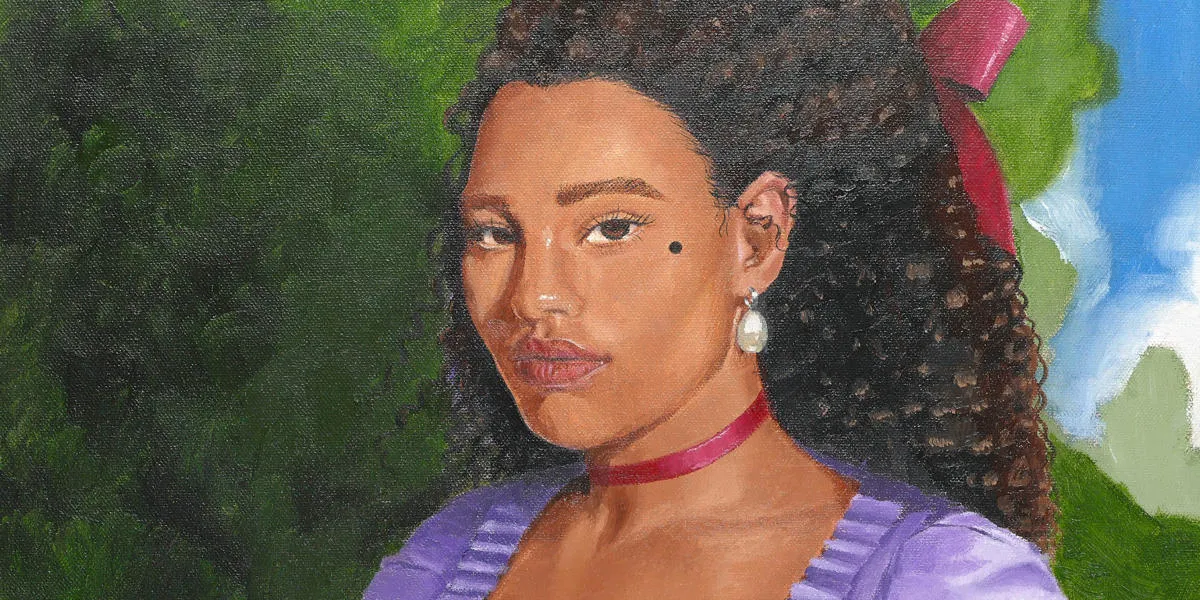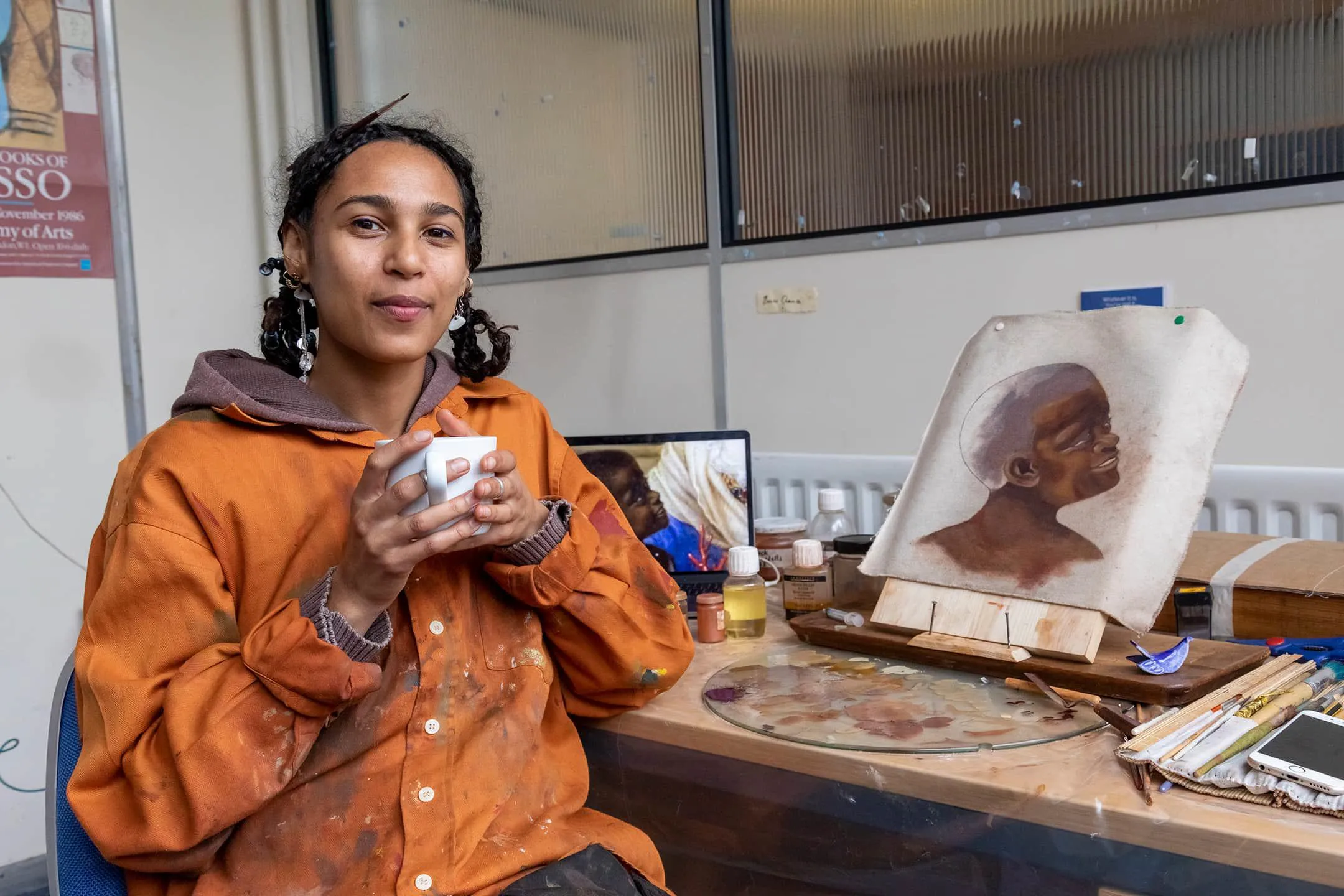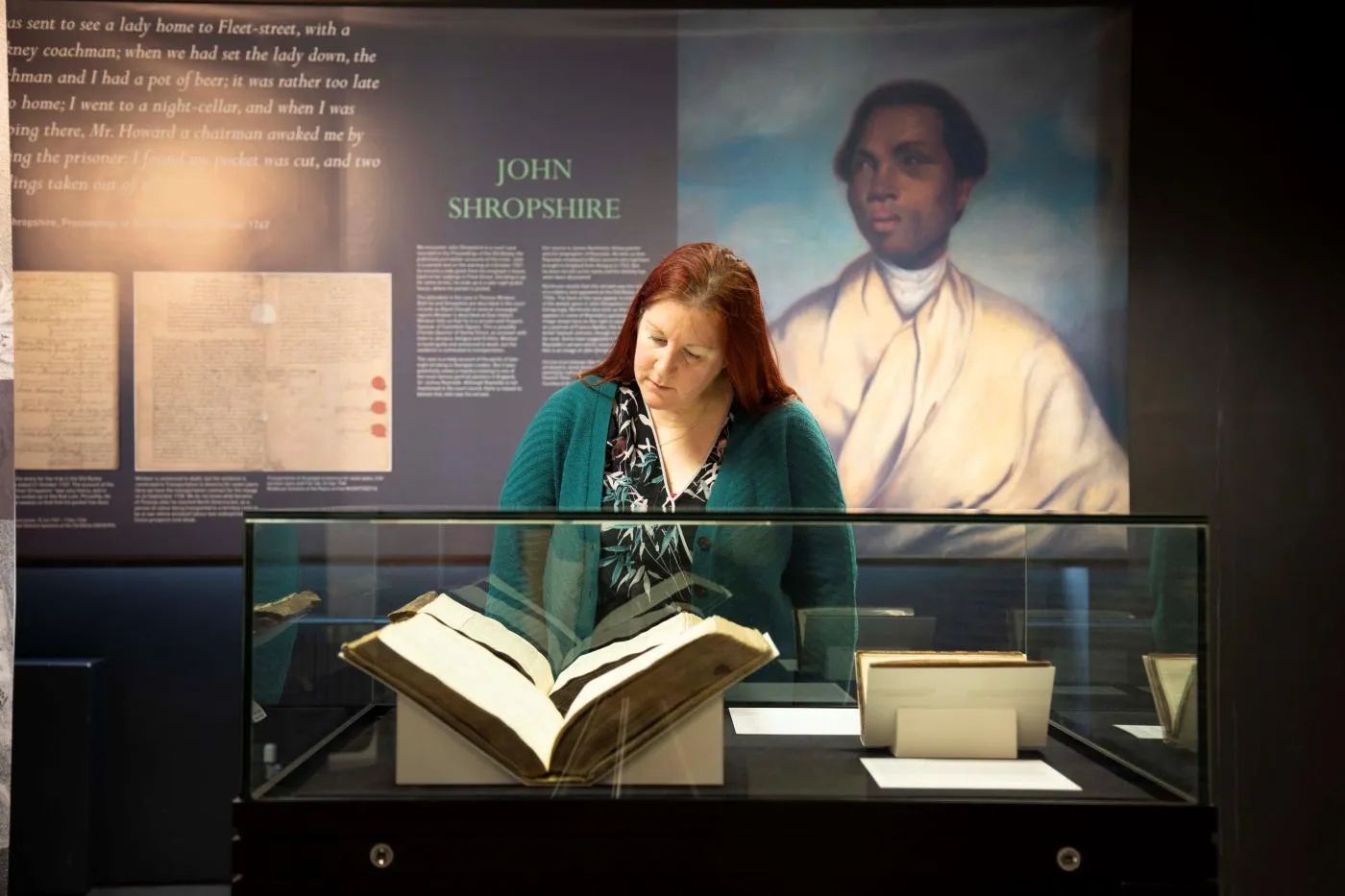About the Art at the Archive project

I hope that people will feel that my work illuminates the sentiment behind the 'Unforgotten Lives' exhibition and the importance of bringing these individuals to light so that we can continue to create better foundations of our historical understandings of that time.
Art Exhibition
'Art at the Archive' was a creative project to bring to life archival records of people of colour from London's past with commissioned art works. Inspired by our 'Unforgotten Lives' exhibition, it featuring five new works by diverse artists Annie-Marie Akussah, Elyssa Rider, and Tara Jerome-Bernabé. The artwork was on display and is now part of the permanent collection at The London Archives.
The Artwork
Annie-Marie Akussah created:
- 'Confronting the unknown, the new land' – a three-dimensional wall hanging
- 'What gets lost in translation, deep deep deep in the belly of...' – a series of books using archival maps and images of landscapes that the Black abolitionist Ottobah Cuguoano would have encountered
These explored the uprooting of people, and manufacturing of resources on both historical sites.
Elyssa Rider produced two oil paintings:
- 'Interpretation of Ann Duck' – a portrait of a young Black mixed race woman whose face has been forgotten but her criminal past preserved in the court records of the Old Bailey
- 'Interpretation of a Japanese Merchant' – an imagined Japanese woman in London in the 1500s, to re-address the absence of East-Asian women in the archive.

Tara Jerome-Bernabé reimagined the lives and images of young black servants who were enslaved and made to work in aristocratic families as ‘houseboys’ in their painting 'Fafanto's Children'. Their new woven painting hopes to start a peaceful and more natural connection to the individuals trapped in certain derogatory paintings of the sixteenth to eighteenth century.

The Inspiration: Unforgotten Lives exhibition
'Art at the Archive' brought together three artists to produce artworks which responded to, reflected on, or were inspired by our Unforgotten Lives exhibition. 'Unforgotten Lives' unveiled the stories of Londoners of African, Caribbean, Asian and Indigenous heritage who lived and worked in the city between 1560 and 1860; their experiences etched into the very fabric of London’s archives.
Our exhibition was a tapestry of these lives - weaving together vibrant threads of love, family, ambition, and resilience, juxtaposed with the stark realities of discrimination and injustice.

The Power of Art in Archival Spaces – Why Art at the Archive?
Archives typically lack the voices of everyday individuals; instead, they primarily focus on discussing people in a formal, institutionalised manner. Art, on the other hand, provides a means to respond and imbue the official narratives with the previously unheard voices of the marginalised.
Archival documents can look visually dull and be difficult to engage with. Art offers an opportunity to humanise these sources, put a face to the record and bring to life the stories of people of colour across time. Art can also provide an opportunity to critically and creatively fill archival gaps and silences, and offer new ways to counter harmful historical misrepresentations.
Through the transformative power of art, we have reimagined the history of African, Caribbean, and Asian heritage in London, shedding light on untold stories and forgotten voices.
Legacy
As a legacy of the Art at the Archive project, the artwork and related material will be preserved in our permanent collections, to symbolically write this story into our history books.
The artwork is available to borrow as part of our loans process, to continue to make it accessible to a large and diverse audience, both nationally and internationally.
As we bid farewell to the Art at the Archive project, we carry with us the beauty and power of preserving and honouring our collective history.
Unforgotten Lives Exhibition